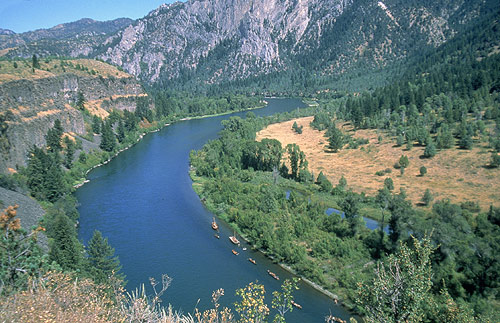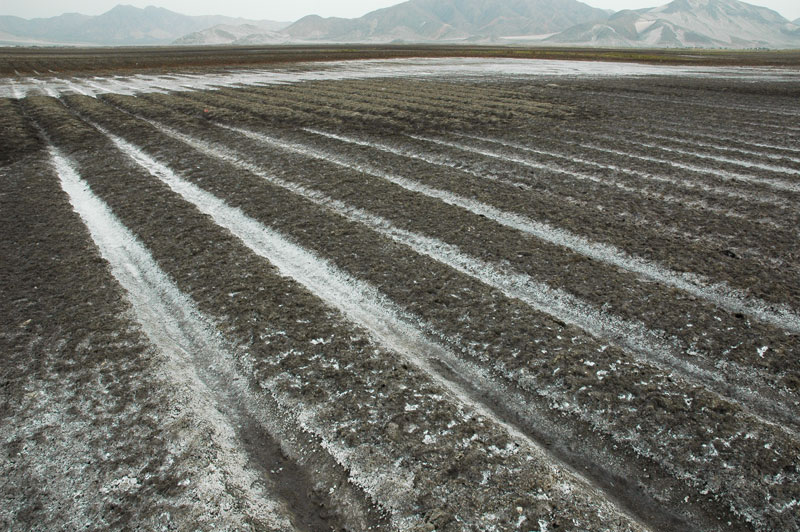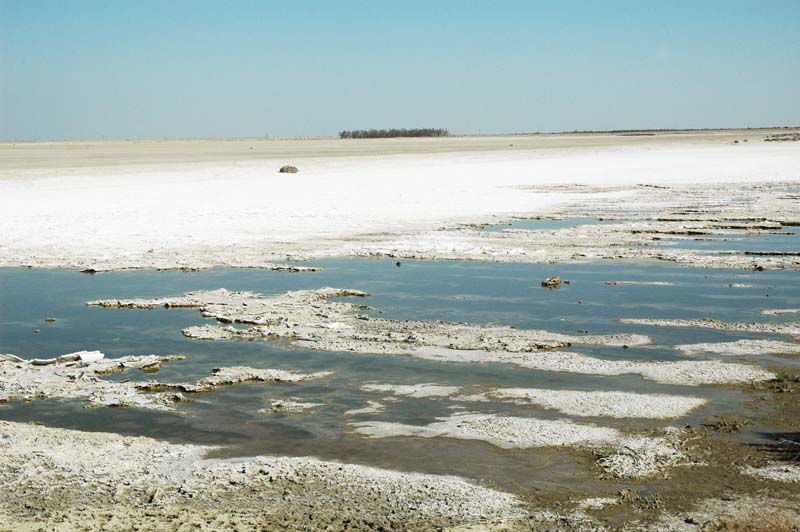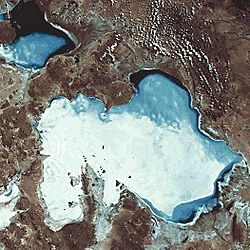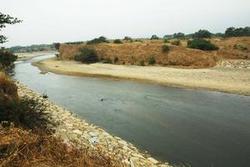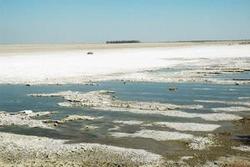|
|
THE NATURAL FUNCTION
OF RIVERS
Where did common sense go?
Victor M. Ponce
2008
|
|
♦ Rivers ♦
Rivers are the most obvious and significant feature of the landscape. They transport water by gravity, from headwaters to ocean.
The natural process is relentless, closing the hydrologic cycle by returning river runoff to the sea.
For surface water, the cycle lasts an average of eleven days; that is, globally,
the entire amount of surface water is
replaced every eleven days. Rivers provide a source of fresh water that is completely replenishable
within a short timeframe. Through the ages, rivers have been used as sources of fresh water, satisfying the ever
increasing thirst of societies,
both ancient and contemporary, for the precious liquid.
The Missouri river.
In semiarid and arid regions, fresh river water is a scarce natural resource,
to be measured, allocated, and sold for economically beneficial uses.
There is, however, a catch. Rivers carry not only liquid water, but also some solids, specifically, suspended solids (sediments)
and dissolved solids (mostly salts). Here we focus on the dissolved solids.
The natural function of rivers is to carry these solids to the ocean.
1
To put it in simple terms, the first and foremost role of rivers is to export the solids produced by the watershed into the ocean.
The Russian river near its mouth, Northern California.
A portion of the river runoff must be reserved for this natural purpose.
It is our job to judiciously
determine what portion of the river runoff should be reserved.
Once this is accomplished, the rest of the runoff may be used consumptively, for instance, to irrigate crops.
Not all the river runoff should be used consumptively,
because this would encroach upon Nature's right to dispose
of its salts, and we wouldn't be able to properly dispose of our own salts either.
Yet this is precisely what society has now apparently set out to do.
In the San Joaquin valley of California, a major U.S. producer of food and fiber,
the concept of "zero net discharge" is becoming the law of the land. It is seen that society encourages farmers
to produce the much needed food and fiber, but
at the same time it
discourages them from disposing of their wastes on the grounds that they would "pollute" the downstream river.
We note that since the beginning of time,
rivers have served as agents for the removal of unwanted salts from the land.
♦ Solids ♦
Under pristine conditions, rivers have a dissolved solid (salt) content ranging from as low as 50 parts
per million (ppm) near the headwaters to as much as 1000 ppm
in the lower reaches. The amounts vary depending on the local climate, geology and geomorphology.
Typically, basins that have been partially
endorheic in the geologic past,
or are currently partially endorheic, have a tendency to show higher salt concentrations. Salt concentrates
through evaporation and evapotranspiration.
In arid and semiarid regions, evaporation predominates, while in subhumid and humid regions, evapotranspiration is the rule.
Regardless of climate,
salts are produced by the mere functioning of the biosphere, either through concentration by evaporation and
evapotranspiration, or by their release from rocks and subsequent waste,
as some salts are not needed in the amounts in which they are supplied.
It is a well known fact that irrigation produces salts. This should not come as a surprise, because irrigation is
just an efficient way of
producing food and fiber, i.e, vegetal matter. In their life cycle, crops evapotranspire a great quantity of water.
At the same time, they help in releasing
many good, and some not-so-good, nutrients from the underlying soil and rock.
Salinized irrigation field, Chao valley, Peru.
Thus, the waste of irrigation is like any
other waste--not needed where it happens,
and therefore, presumably, to be gotten rid of.
The prevailing wisdom appears to be that irrigation waste is not bad enough to get rid of it.
Following this rationale, the concept of "evaporation basin" has evolved.
The evaporation basin is located somewhere downstream of the irrigation enterprise, ready to take the brackish wastewater, evaporate the water and accumulate the solids,
that is, the unwanted salts.
South evaporation pond, Tulare Lake Drainage District, California.
This situation, however, is not optimal, because we know that
where Nature has produced closed-drainage
systems, it has also suppressed most life. The world has many examples
of endorheic drainage systems; they are invariably limited
in their ability to sustain a wide diversity of species.
The newly developed argument that we ought to separate the salts and make use of them as a resource, rather than as a waste, remains to be demonstrated.
Indeed, the separation of salts may prove to be very energy intensive. The technology can only be justified if it does not increase our carbon footprint
in the process.
♦ Conclusion ♦
In conclusion, if we persist in engineering evaporation ponds where irrigation enterprises have flourished,
we will also engineer a dismal future of salt-affected, barren lands.
Uyuni Salar, Bolivia (NASA).
It means eventually quitting the irrigation enterprise altogether,
a strategy that is clearly not in our best interest. The correct approach is to reserve a certain amount of waste runoff to carry the solids to the ocean. To the extent possible, gravity flow, a renewable form of energy, should be the preferred way for the mechanical transport of waste solids to the sea.
___________________
1 Pillsbury, A. F., 1981. "The Salinity of Rivers,"
Scientific American, July, 55-65.
|
